Picture this: You step eagerly into the shower, ready to immerse yourself in a cascade of warm, relaxing water. But alas, the experience falls short as you’re met with a lukewarm trickle that leaves you shivering and disappointed.
We’ve all been there, and there’s nothing more frustrating than a shower that fails to deliver the perfect temperature. Maybe the temperature setting is programmed to a low level and that’s causing the problem.
You might also discover that the element in an electric water heater is worn down, which causes the water to only heat for a short period of time, or not at all in some cases.
That’s why we’re here to rescue you from the woes of insufficiently hot water in your shower. In this guide, we’ll unveil a series of troubleshooting tips and expert insights to help you uncover the root cause of your tepid dilemma.
Where Do You Start When Your Water Is Not Hot Enough?
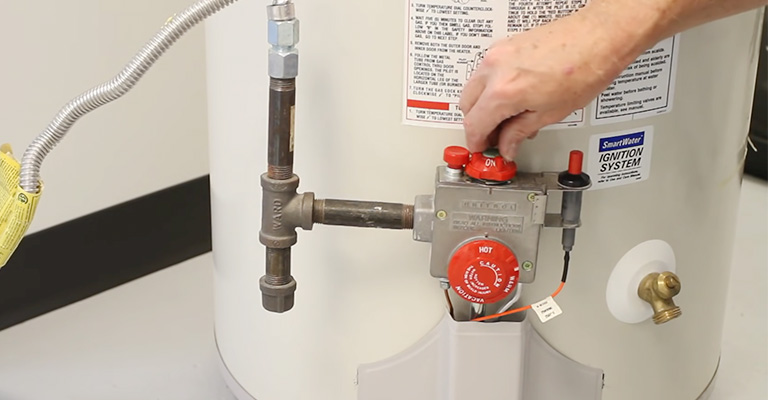
A tankless water heater, a gas heater or an electric heater can experience problems over time with the water not reaching the necessary temperature.
There are cases when adjusting the thermostat of your water tank can solve the problem.
It may sound overly simple, but sometimes it’s as simple as just going to your water tank. Sometimes the temperature changes because they get bumped by accident.
During the summer, people sometimes forget to lower the thermostat to conserve energy. Simply raising the thermostat temperature is the quick and easy fix here.
The temperature of the water should not be higher than 120°F (or 49°C), as this can result in scalding and severe burns.
Your thermostat can be faulty if you turn it up and no water temperature increases. This will require you to call a professional to replace it.
What To Do If Your Shower Water Isn’t Hot Enough?
Your shower may not be supplying enough hot water, or it may not be producing any at all, depending on some factors. This article explores some of those explanations and offers tips for addressing them.
1. Shower Issues Related To The Mixing Valve
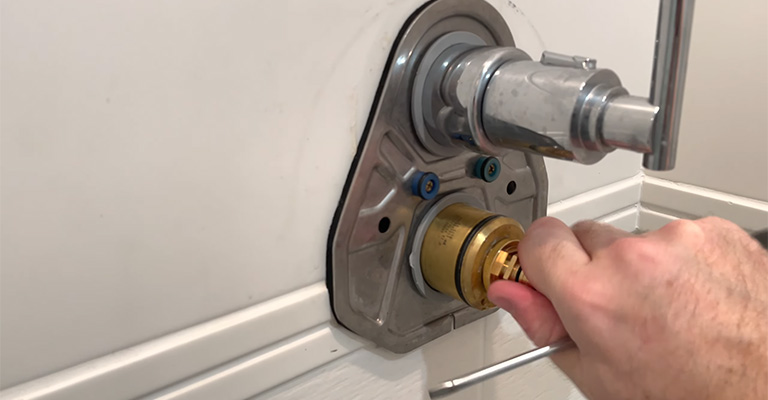
There may be no malfunctioning or improperly set anti-scald valve to blame for lacking hot shower water. Instead, you may need to check the mixing valve attached to your shower.
The Mixing Valve Is Causing A Plumbing Crossover
Mixing valves ensure that hot and cold water is mixed with the right amount of efficiency to feel comfortable when you shower.
However, some mixing valves may allow too much cold water to mix with warm water. As a result, there is a phenomenon called a plumbing crossover, according to Water Heater Guide.
You won’t likely get hot water for your showers if your plumbing crossovers are running along your shower pipes. Most of the time, lukewarm water will be present in the pool. Getting rid of a plumbing crossover problem is not an easy task.
You will most likely have to have someone take a closer look inside your plumbing system and apply any necessary fixes. It is recommended that you enlist professional assistance if you have faced any problems of this nature.
The Mixing Valve Is Busted
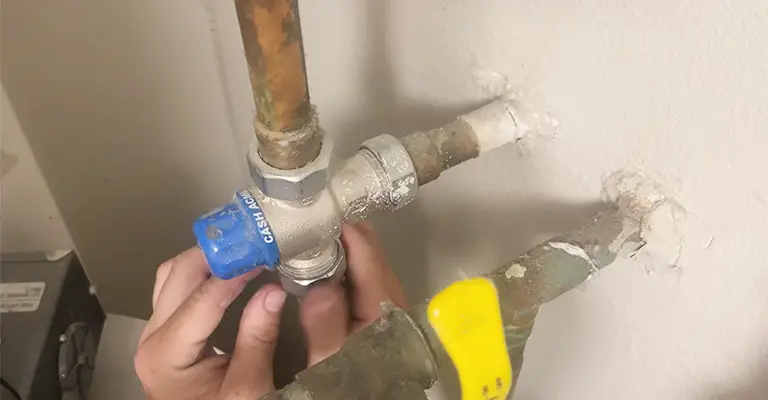
A malfunctioning mixing valve could prevent you from getting enough hot water from your shower. Over time, the rubber parts in mixing valves wear out, so they need to be replaced.
Additionally, to age, rubber pieces repeatedly exposed to high temperatures tend to break down more quickly. When the rubber pieces break, they can move around and cause blockages inside the shower pipes.
It will take some time to replace those rubber pieces before your shower works again. Often, homeowners hire professionals to handle these tasks because they’re difficult for them to perform.
The Mixing Valve Is Not Set Correctly
There are many things to learn about working with pipes. Eventually, you realize that you’ve accidentally flipped the positions of various components you thought you’d placed correctly.
One of those pieces that can be misplaced is the mixing valve. There is a lot of work involved in accessing the mixing valve. It is often a job that needs to be done by a professional.
2. Shower Issues Related To The Anti-Scald Valve
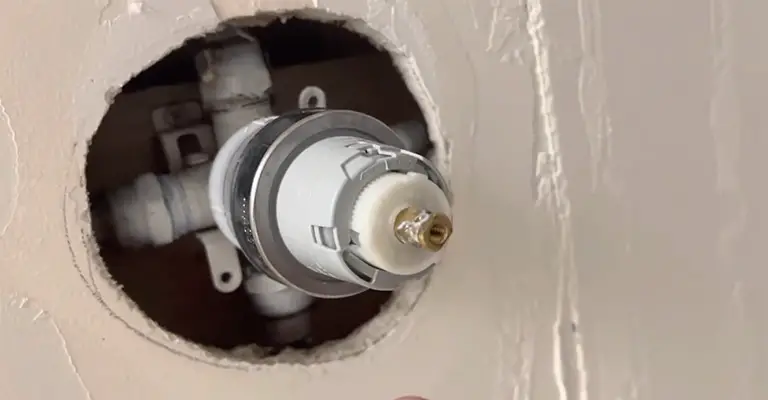
There is no need to look far to figure out why your shower isn’t providing hot water. You might need to replace the shower itself if there is an issue.
This handy piece keeps the water temperature from getting too hot or too cold by acting as an anti-scald valve. The handle usually comes with this feature, but your home might not have it if it’s older.
Elderly individuals and young children living in homes need anti-scald valves because they are a safety feature that helps prevent accidents. In this way, your loved ones are protected from potentially painful burns.
However, these specialized valves are also subject to failure.
The Anti-Scald Valve Is Not Set Correctly
You might also need to calibrate the anti-scald valve, which could be the problem. You might want to adjust the setting to a little bit lighter. If you want to get the right temperature in your water, you’ll need to change it.
You can find a plastic device by removing your faucet’s cover. Anti-scald valves are those plastic devices.
After that, turn the valve to the right and test the water. Take a look at the hot water and see if it meets your needs. When you reach your desired temperature, continue adjusting the valve.
The Anti-Scald Valve Is Clogged
Anti-scald valves may also experience clogging problems. Using these components continuously can result in them getting blocked.
Flush the clogged anti-scald valve with water to fix the problem. If that doesn’t work and the valve looks damaged, a replacement may be necessary.
The Anti-Scald Valve Was Improperly Installed
To begin with, the anti-scald valve may have been incorrectly installed. In Do It Yourself, it is reported that the top and bottom segments of the anti-scald valve are not always clearly marked. This may lead to the valve not being positioned correctly.
Your shower should have the right amount of hot water if you take the anti-scald valve out of its current position.
3. Water Heater Issues
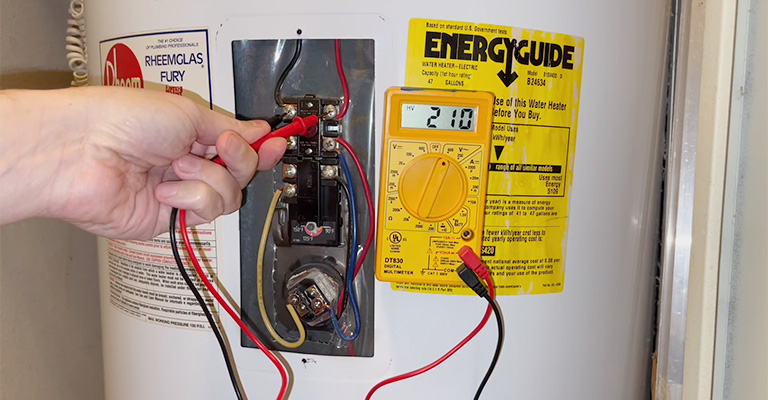
The hot water you use at home isn’t the only heat source. In other words, it’s the result of a heater doing its best to keep you comfortable during baths and showers.
Usually, water heaters are asked to deal with a great deal of work. We should not be surprised to find that some issues are occurring with it. You should watch out for the following problems regarding your water heater.
The Water Heater Is Leaking
The problem of leaking from a water heater is common. That may be the reason you don’t get enough hot water.
Lack of maintenance could result in the water heater leaking. Debris can accumulate inside the water heater tank when it is not flushed regularly. The accumulation of debris can eventually lead to leaks in your water heater.
There is also the possibility that parts of the heater can become loose and cause a leak. Some of the components inside the water heater may start breaking apart and begin bumping around the tank, which causes holes to form.
Old age is another factor that can lead to a leak in a tank. A high-priced water heater tank’s wall can deteriorate even if it has a sturdy construction. As a result, they will eventually crumble and open up.
The Water Heater Has Faulty Components
Water heaters are complex pieces of equipment that require several components to work together to accomplish their task. Unless one of those components is functioning correctly, you won’t have hot water.
Heating elements are one component that could cause problems.
It is possible that a buildup of dirt around the burner could prevent it from producing the proper amount of heat. The gas burner must be cleaned in order for the heater to function correctly again.
Electric burner heating elements can also develop mechanical problems. It’s unlikely that cleaning will solve the problem with those electric heating elements. The need to replace them will arise.
There is also a possibility that your water heater might be malfunctioning owing to a damaged dip tube.
By using the dip tube, cold water is transported to the bottom of the tank, where it can be heated up for a while. Whenever the dip tube breaks or leaks, the cold water exits the tank and swiftly reaches whatever outlets are connected.
Make sure the thermostat is working. It is possible that your thermostat is not working correctly and is showing incorrect temperatures. If the thermostat is inconsistently off temperature, you’ll have trouble getting the water to the right temperature.
4. Pipe-Related Issues
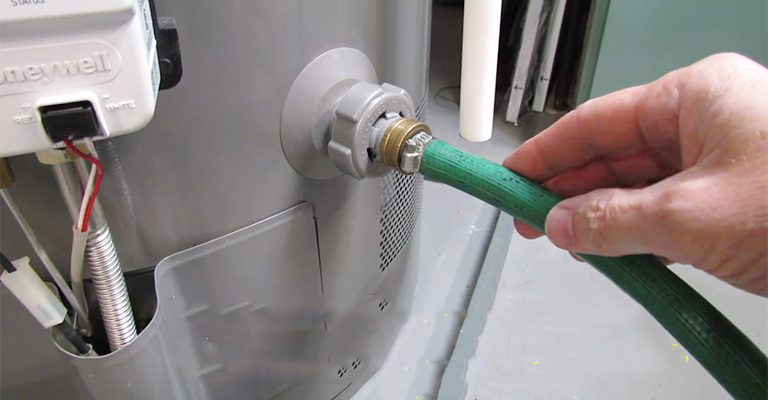
The shower and its many components may not need repairs after you and the people you hired inspect it thoroughly.
Is there anything causing a lack of hot water in that scenario? How your home’s pipes are arranged could be the reason.
There Are Corroded Pipes Inside Your Home
A corroded pipe is problematic, not because it might contaminate your water supply. They can also cause a significant reduction in water pressure.
If your pipes become corroded, they can affect the rest of your plumbing system and water heater. In this case, a reduced pressure will make it difficult for the hot water to reach its intended destination.
There Are Cross-Connected Pipes In Your Home
If you don’t have hot water, it might be, in part, a result of cross-connected pipes. Pipes connected crosswise used to be helpful in the past.
Since mixing valves weren’t available back then, home builders had to devise other methods to allow hot and cold water to flow together through the shower.
It was decided to connect the pipes in cross-connections as a solution. Now that hot water can be accessed at any time, those cross-connected pipes are no longer necessary, as inventions have made access easier.
In spite of this, you may still have those cross-connected pipes, and they may be causing you trouble now.
It’s hard to say that cross-connected pipes cause problems right away. When it comes to lukewarm showers, you may have to work through the process of elimination before you figure out the cause.
In light of the old age of your pipes and the difficulty fiddling with them, you may need a plumber to handle this.
Other Issues
It’s possible that you’re not getting enough hot water for numerous reasons. Our next section will highlight more causes that are relatively straightforward.
You May Be Showering At The Wrong Time
When you change your schedule, you can find that you don’t get enough hot water whenever you shower. If you shower at the wrong time, it could be that you’re not getting enough water.
If your water heater runs on and off cycles, you might be showering just as it shuts off. You should be able to resolve this problem by adjusting your routine.
The Demand For Hot Water Is Too High
The water heater keeps all that water in a tank so you can access it whenever you need it. The tank should generally provide more than enough hot water daily, but that may not always be the case.
When households are crowded, hot water becomes a precious commodity. So, shower early to ensure there is plenty for everyone. As well as new appliances being installed, hot water consumption can also increase.
Either installing an electric heater with a larger capacity or using a tankless one can solve the hot water shortage.
The Water Going Into The Heater Is Too Cold
It is possible to go through months without having any issues with a water heater and then go through months with never enough hot water. In some cases, the problem may not be with your heater. The climate might instead cause it.
In some parts of the country, winters are colder than in others. Thus, the water flowing into homes also has a colder temperature than usual.
For this particular problem, there’s an easy fix. Water heaters should be set at the correct temperature so that water is ready when needed. It’s time to dial down the thermostat once spring arrives.
Final Words
It’s hoped that your shower’s lack of hot water can be fixed immediately. Nevertheless, there is no need for concern if more extensive repairs are needed.







